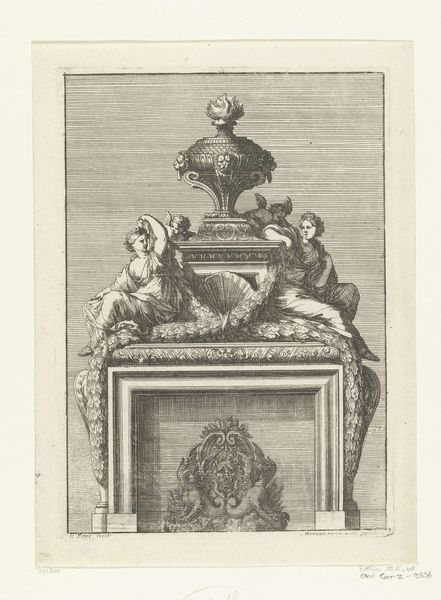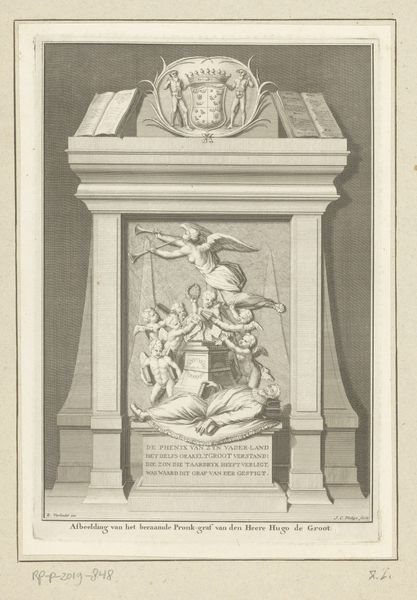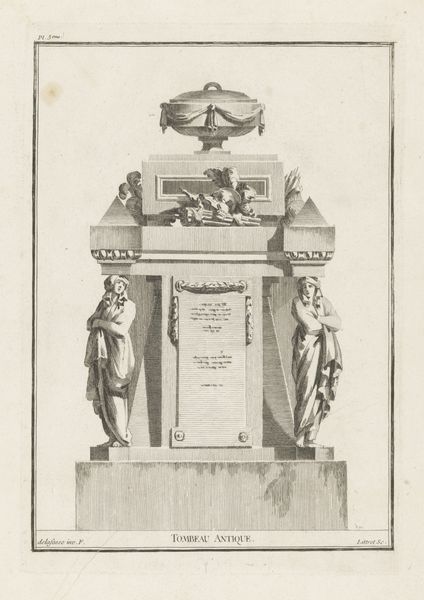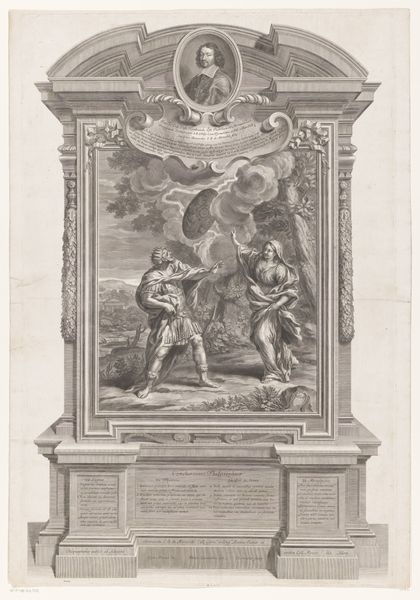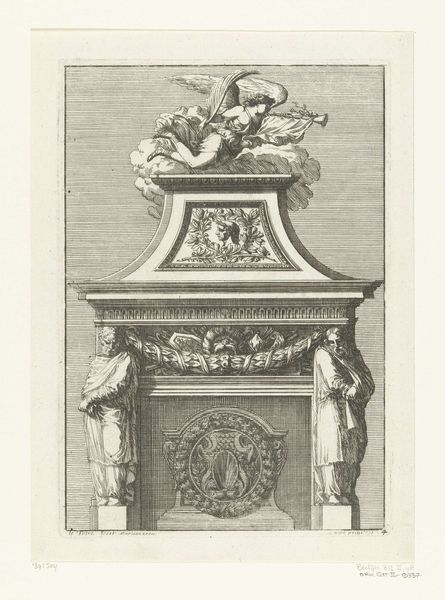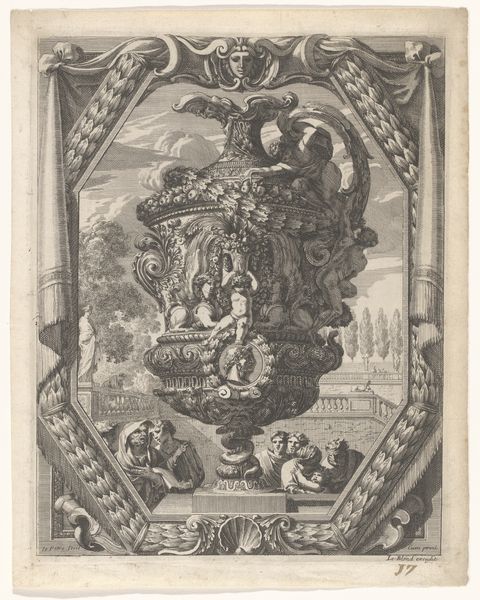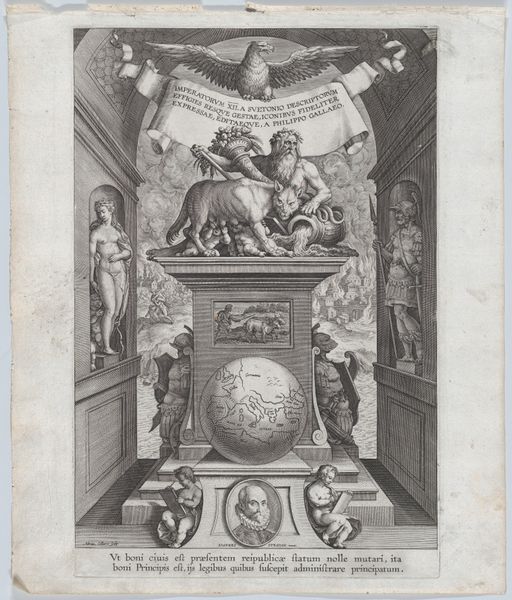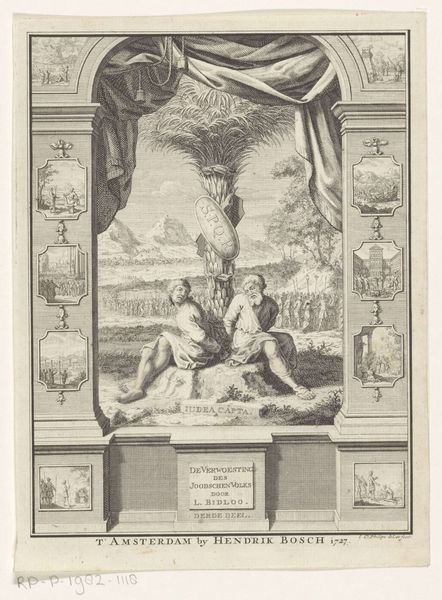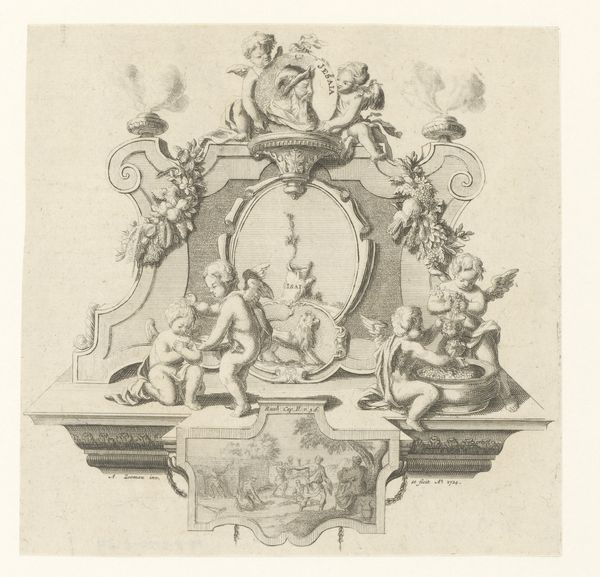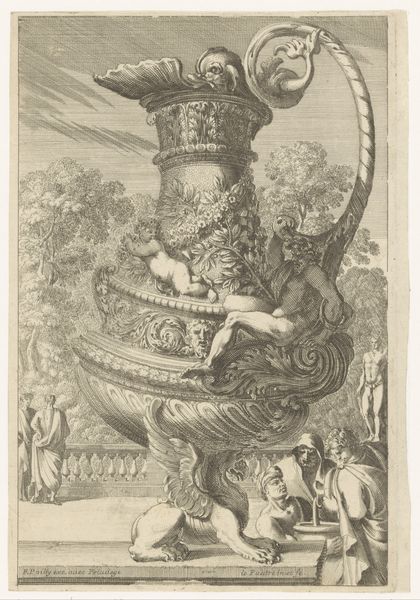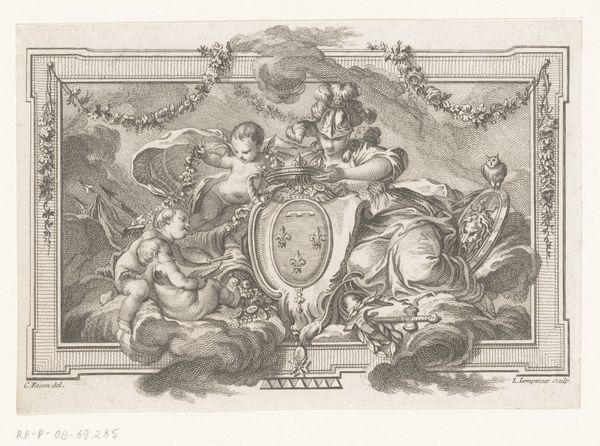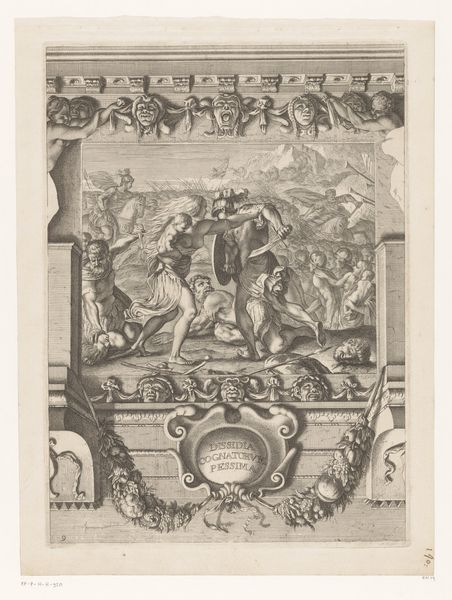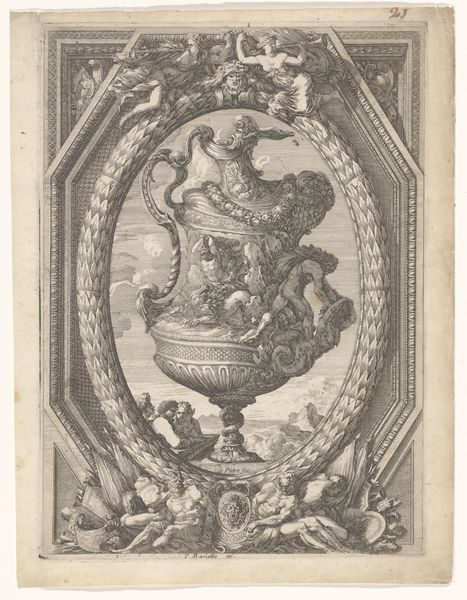
Portret van Sigismund von Kollonitsch met allegorie 1727 - 1761
0:00
0:00
engraving
#
portrait
#
allegory
#
baroque
#
old engraving style
#
engraving
Dimensions: height 446 mm, width 296 mm
Copyright: Rijks Museum: Open Domain
Curator: Here we have an engraving titled "Portret van Sigismund von Kollonitsch met allegorie," placing it in the artistic landscape of the 18th century. Jeremias Jakob Sedelmayr likely produced this piece between 1727 and 1761. Editor: Wow, it's got this grandiose feel, doesn't it? Almost theatrical. The details are so intricate, it's like looking at a tiny stage play. Sort of ornate. Curator: Precisely! It exemplifies the Baroque style, known for its dramatic and elaborate compositions, which very often intertwined political with personal narratives. Let’s examine Sigismund von Kollonitsch, for example. As a prominent figure, portraying him in such an allegorical manner aimed to legitimize and enhance his status through visual rhetoric. Editor: Allegory makes it a bit of a puzzle too, right? We've got this bust, these chubby cherubs hanging around, even a winged dude with a banner soaring overhead, and mountains? It’s wild, almost chaotic. So who was Kollonitsch? Curator: Sigismund von Kollonitsch was, among other things, the Archbishop of Vienna. In this image, the winged figure likely signifies fame or glory, the cherubs denote divine favor, while the mountains can symbolize steadfastness. The engraving served as propaganda, a visualization of power legitimized through religious and symbolic allusions. This was to project authority but also to solidify a place in history for its subject. Editor: Propaganda through cuteness! These Baroque guys really knew how to work a concept, didn’t they? Thinking about it makes the image feel kind of performative, like everything’s deliberately positioned for maximum impact. Like, BAM! This dude’s IMPORTANT! What do you think it says about art and power, especially in that era? Curator: I agree that there’s performance inherent in this imagery. I feel that we can examine how portraits, such as this, were used to shape political and religious identities and promote specific agendas. Understanding the artwork demands deconstruction of the intricate layers of symbolic language used. How effectively Sedelmayr’s image conveyed Kollonitsch’s importance requires deeper exploration, not least of how such imagery shaped the world views of the engraver's own contemporaries. Editor: Totally. I still can’t get over the floating man though, just floating above it all! All in all, it gives a unique insight into art's function in affirming hierarchies, with this wild mix of angelic figures.
Comments
No comments
Be the first to comment and join the conversation on the ultimate creative platform.
